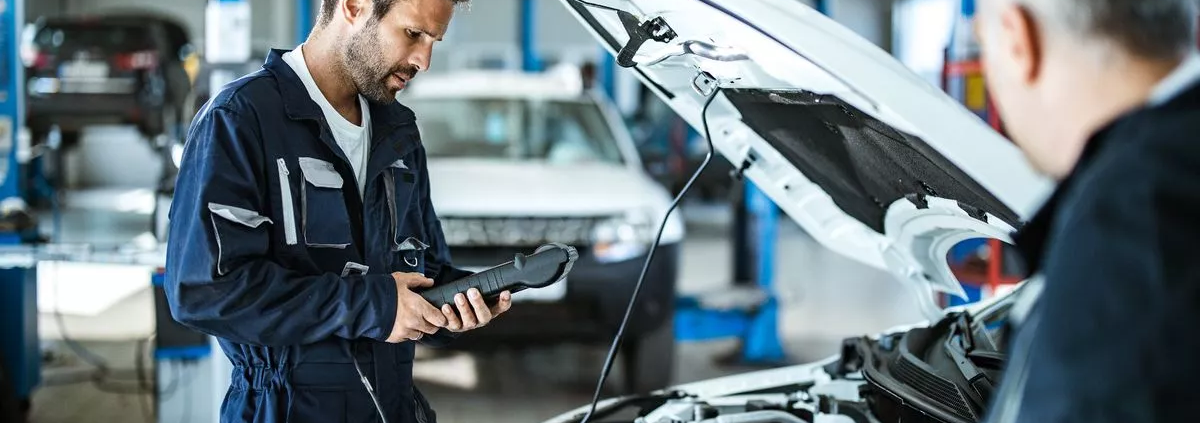10 Service Tips For Used Cars: Engine Health Essentials
Buying a used automobile might be a wise financial decision, but keeping its engine healthy calls for close maintenance. Many owners search for cheap car service choices to cut costs; however, skimping on crucial maintenance can result in expensive repairs later on. A well-maintained engine preserves the performance of your car as well as its value and assures reliability. From regular oil changes to timely belt replacements, these service recommendations will enable you to see your used automobile running well for years to come. This manual highlights 10 essential maintenance tasks every used car owner should know to safeguard their asset and prevent unanticipated failures.
Regular Filter and Oil Changes
Engine oil lubricates moving parts and helps to avoid too much wear; hence, regular changes are essential for used cars. While synthetic blends can survive 7,500 to 10,000 miles, conventional oil should be replaced every 3,000 to 5,000 miles. Always change the oil filter at the same time to stop contaminants from spreading. Consult your owner’s manual for the suggested oil grade and change intervals. Dark, greasy oil tells one it’s past due for replacement. For those looking for a Car Service, check costs at well-known shops instead of ignoring repairs entirely. Fresh oil keeps engines running well and stops sludge accumulation that might gradually cause major damage.
Maintenance of Cooling Systems
One of the main causes of failures in used automobiles is that the cooling system stops the engine from overheating. Monthly coolant level checks; top with the proper kind noted in your manual. Rust and scale deposits should be removed by flushing the system every 30,000 miles or two to three years. Check hoses for soft spots or fractures; if worn, replace. Overheating can result from either a broken thermostat or a water pump, so treat temperature gauge changes right away. Pressure testing finds leaks in connections or radiators. Usually consisting of 50/50 antifreeze and water, the right coolant mix protects your engine all year by preventing winter freezing and summer boiling.
Replacement of Timing Belts
Between 60,000 and 100,000 miles, most manufacturers advise changing timing belts. Particularly in interference engines where pistons and valves clash, a snapped belt might result in disastrous engine damage. Pay attention to squealing sounds and inspect the belt surface for cracks or glazing. Typically, complete servicing calls for tensioners and a water pump. Though not the least expensive repair, timely belt replacement saves much more costly engine rebuilds. Some car service companies provide bundle options for this essential maintenance item. For next purchasers, maintain records as evidence of replacement.
Checks on Air Filters
A blocked air filter limits airflow, therefore lowering fuel economy and engine efficiency. Every oil change, examine the filter; hold it up to light. If you cannot see through it, the lamination is overdue. In dusty surroundings, change filters more often. Though inexpensive, modern paper filters are essential for preventing abrasive particles from entering the engine. Though they need frequent cleaning, performance air filters provide reusable options. Good air filtration preserves the optimal air-fuel ratio and shields delicate parts such as mass airflow sensors. Although it takes minutes, this straightforward maintenance job greatly affects engine life.
Service of Spark Plugs
Worn spark plugs lead to erratic idling, engine misfiring, and sluggish acceleration. While platinum or iridium variants might surpass 100,000 miles, copper plugs often last 30,000 miles. When checking plugs, search for oil fouling or electrode erosion. Replace them in entire sets using the appropriate heat range provided for your engine. Well-spaced plugs guarantee good combustion and gas economy. Although DIY replacement lowers labour costs, some contemporary engines need particular tools or have challenging access.
Cleaning the Fuel System
Especially in direct injection engines, carbon deposits build up in intake valves and fuel injectors. Every 30,000 miles of expert fuel system cleaning involves the right spray patterns and air movement. Between services, utilise premium fuel additives to maintain injector cleanliness. Scheduled replacement of fuel filters helps to preserve the appropriate pressure. Symptoms such as indecision, erratic idling, or lower mileage point to maintenance. Basic fuel system maintenance is included in some Car Service packages. Good maintenance avoids expensive injector replacement and ensures the best combustion efficiency. Although modern low-sulfur fuels deposit less, regular maintenance is vital.
Conclusion
Maintaining the engine of a used car calls for regular, appropriate care; it does not call for lavish expenditures. These ten guidelines lay the groundwork for maintaining the performance and dependability of your car. Although looking for affordable car service alternatives makes economic sense, give high-quality work on essential parts like cooling systems and timing belts top priority. Regular maintenance stops small problems from developing into major repairs, therefore conserving money over the long run. Maintain thorough service logs to show when selling appropriate care. Years of reliable service from a well-maintained used car demonstrate that prudent maintenance decisions now avoid costly malfunctions later. Invest in these fundamental engine health items to safeguard your automotive investment and enable worry-free driving.
Visit rmconnection for more informative blogs.



Leave a Reply
Want to join the discussion?Feel free to contribute!